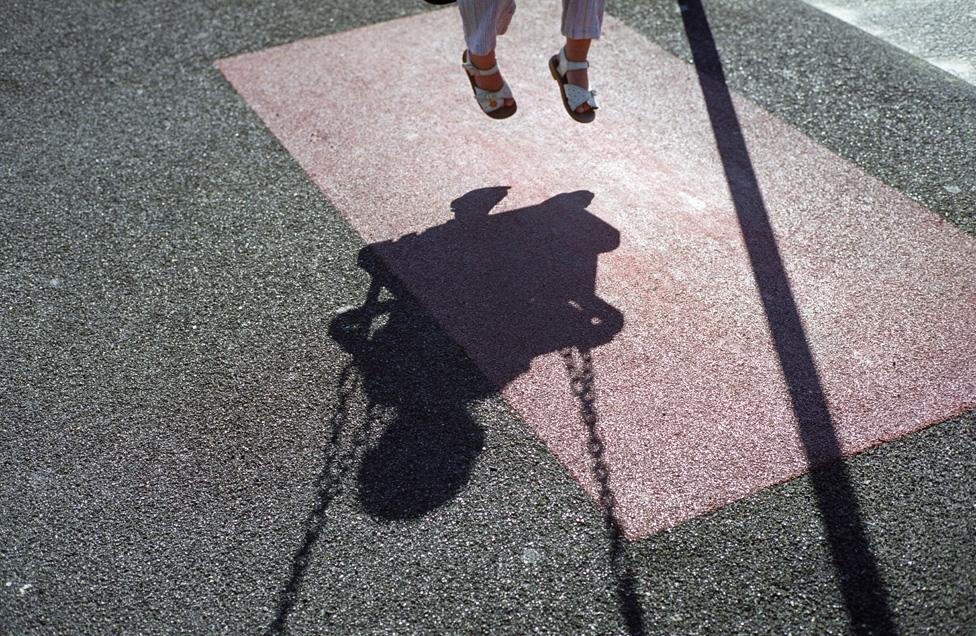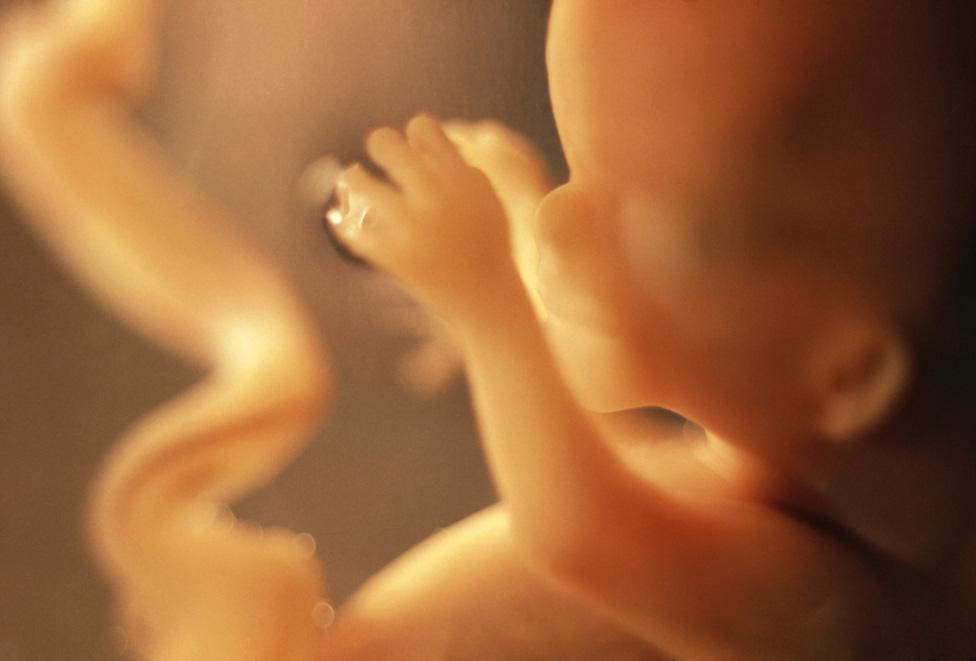The extraordinary case of the Guevedoces
- Published

Catherine and his cousin Carla, Guevedoces in the Dominican Republic
The discovery of a small community in the Dominican Republic, where some males are born looking like girls and only grow penises at puberty, has led to the development of a blockbuster drug that has helped millions of people, writes Michael Mosley.
Johnny lives in a small town in the Dominican Republic where he, and others like him, are known as "Guevedoces", which effectively translates as "penis at twelve".
We came across Johnny when we were filming for a new BBC Two series Countdown to Life, which looks at how we develop in the womb and how those changes, normal and abnormal, impact us later in life.
Like the other Guevedoces, Johnny was brought up as a girl because he had no visible testes or penis and what appeared to be a vagina. It is only when he approached puberty that his penis grew and testicles descended.
Johnny, once known as Felicita, remembers going to school in a little red dress, though he says he was never happy doing girl things.

Find out more

Watch the second episode of Countdown to Life: The Extraordinary Making of You, Against the Odds, on BBC Two at 21:00 on Monday 21 September, or catch up afterwards on iPlayer.

"I never liked to dress as a girl and when they bought me toys for girls I never bothered playing with them - when I saw a group of boys I would stop to play ball with them."
When he became obviously male he was taunted at school, and responded with his fists.
"They used to say I was a devil, nasty things, bad words and I had no choice but to fight them because they were crossing the line."
We also filmed with Carla, who at the age of seven is on the brink of changing into Carlos. His mother has seen the change coming for quite a while.
"When she turned five I noticed that whenever she saw one of her male friends she wanted to fight with him. Her muscles and chest began growing. You could see she was going to be a boy. I love her however she is. Girl or boy, it makes no difference."

So why does it happen? Well, one of the first people to study this unusual condition was Dr Julianne Imperato-McGinley, from Cornell Medical College in New York. In the 1970s she made her way to this remote part of the Dominican Republic, drawn by extraordinary reports of girls turning into boys.
When she got there she found the rumours were true. She did lots of studies on the Guevedoces (including what must have been rather painful biopsies of their testicles) before finally unravelling the mystery of what was going on.
When you are conceived you normally have a pair of X chromosomes if you are to become a girl and a set of XY chromosomes if you are destined to be male.
For the first weeks of life in womb you are neither, though in both sexes nipples start to grow.
Then, around eight weeks after conception, the sex hormones kick in. If you're genetically male the Y chromosome instructs your gonads to become testicles and sends testosterone to a structure called the tubercle, where it is converted into a more potent hormone called dihydro-testosterone This in turn transforms the tubercle into a penis. If you're female and you don't make dihydro-testosterone then your tubercle becomes a clitoris.

When Imperato-McGinley investigated the Guevedoces she discovered the reason they don't have male genitalia when they are born is because they are deficient in an enzyme called 5-alpha-reductase, which normally converts testosterone into dihydro-testosterone.
This deficiency seems to be a genetic condition, quite common in this part of the Dominican Republic, but vanishingly rare elsewhere. So the boys, despite having an XY chromosome, appear female when they are born. At puberty, like other boys, they get a second surge of testosterone. This time the body does respond and they sprout muscles, testes and a penis.
Imperato-McGinley's thorough medical investigations showed that in most cases their new, male equipment seems to work fine and that most Guevedoces live out their lives as men, though some go through an operation and remain female.
Another thing that Imperato-McGinley discovered, which would have profound implications for many men around the world, was that the Guevedoces tend to have small prostates.
This observation, made in 1974, was picked up by Roy Vagelos, head of research at the multinational pharmaceutical giant, Merck. He thought this was extremely interesting and set in progress research which led to the development of what has become a best-selling drug, finasteride, which blocks the action of 5-alpha-reductase, mimicking the lack of dihydro-testosterone seen in the Guevedoces.
My wife, who is a GP, routinely prescribes finasteride as it is an effective way to treat benign enlargement of the prostate, a real curse for many men as they get older. Finasteride is also used to treat male pattern baldness.
A final interesting observation that Imperato-McGinley made was that these boys, despite being brought up as girls, almost all showed strong heterosexual preferences. She concluded in her seminal paper that hormones in the womb matter more than rearing when it comes to your sexual orientation, external.
This is still a controversial topic and one I explore later in the film when I meet Mati, who decided from the earliest age that though "he" looked like a boy, Mati was really a girl.
As for Johnny, since he developed male genitalia he has had a number of short term girlfriends, but he is still looking for love. "I'd like to get married and have children, a partner who will stand by me through good and bad," he sighs wistfully.

More from the Magazine

The number of children aged 10 and under who have been referred to NHS support services to help deal with transgender feelings has more than quadrupled in the last six years, the Victoria Derbyshire programme has learned. Here is the story of two of the youngest transgender children in the UK - with permission from their parents and with the support of the children's schools.

Subscribe to the BBC News Magazine's email newsletter, external to get articles sent to your inbox.